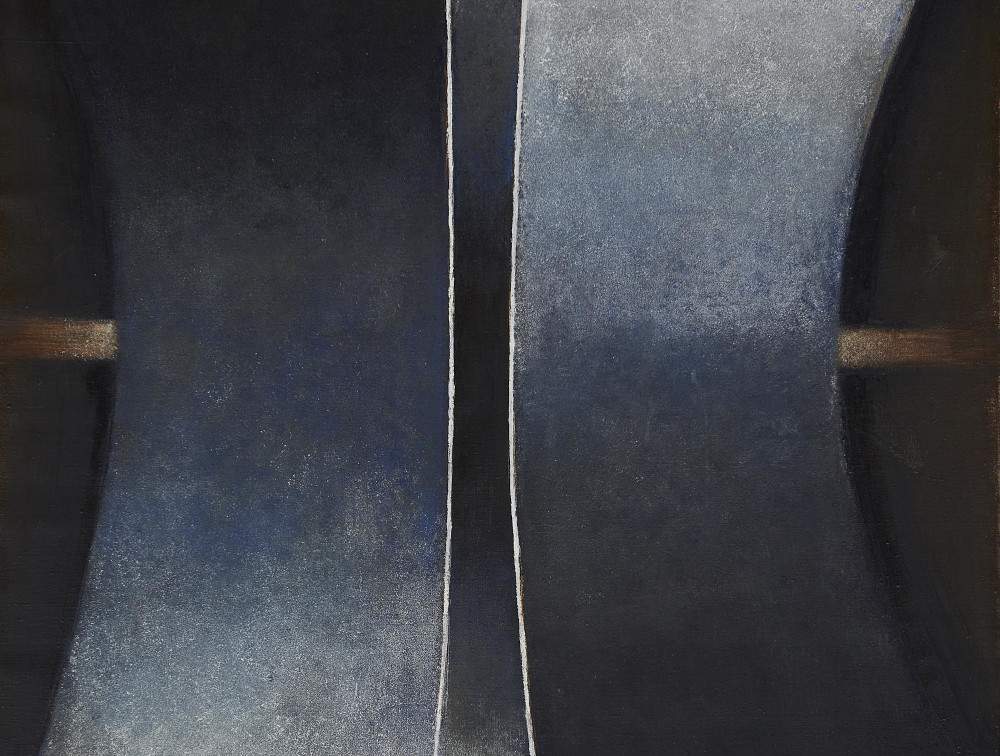Dep Art Gallery dedicates an exhibition to Stefan Gierowski, among Poland's leading post-World War II artists
From May 5 to July 7, 2022, Dep Art Gallery in Milan presents the exhibition Stefan Gierowski - The Sense of Space, the Choice of Light, curated by Michel Gauthier and realized in collaboration with the Stefan Gierowski Foundation, dedicated to one of the major post-World War II Polish artists who returns to exhibit in Italy after the 1968 Venice Biennale.
Tracing the production of Stefan Gierowski (CzÄ™stochowa, 1925) from the 1950s to the 1980s, the exhibition aims to explore the Polish artist’s relationship with the Italian informal season through a comparison with some works by Lucio Fontana, Mario Nigro and Piero Dorazio, showing analogies and parallels. The review aims to reread the artist within the abstract current of the twentieth century in order to affirm his role in the international informal season and to restore to his production that position that was deprived to him for various historical reasons, first and foremost the Cold War.
The curator speaks of Gierowski’s painting as “an open structure at a point on an infinite space,” identifying a fundamental characteristic of his work, namely the ability to give depth to the pictorial surface. And it is precisely this desire to open the pictorial field to a total space that unites Gierowski’s production with that of artists of the same years in Italy such as Lucio Fontana, Mario Nigro and Piero Dorazio. Fontana’s cuts that open slashes in the canvas; Nigro’s perspective grids that give an illusion of spatial depth; Piero Dorazio’s chromatic textures that extend the play of lines of different colors to infinity.
Exhibited particularly in the Polish and Eastern European context, Gierowski’s work returns to Italy after more than fifty years since his last exhibition, from that 1968 when the artist presented a group of paintings, including the work CLXXXI on view at the Dep Art Gallery, made between 1963 and 1976 in the Polish pavilion at the Venice Biennale.
From the 1968 Venice Biennale, the exhibition presents the work CLXXXI (1964), a witness to the research of the 1960s along with CXCVII (1966), a superimposition of two oblique forms that seem to extend beyond the limits of the canvas, and CCXXXV (1968), a bichromatic, red and green canvas separated into two parts by a vertical slit from which a white light emerges from the background.
Around the mid-1970s, Gierowski’s painting achieves textures generated by theintersection of lines of different colors, as in CCCLXXIII (1976), in which a vertical rectangle of colored lines floats on a black background, through which a horizontal strip of light passes. At the same time, the artist was achieving compositions characterized by a more pointillist and hazy pictorial space: in CCCXCIV (1977) on a black background a multitude of white and blue dots gives rise to a chromatically unstable field. Even at the beginning of that decade, as noted in CCLXXIII (1971), the greater or lesser density of the dots created subtle variations in luminous and chromatic intensity. The pictorial field is no longer a surface, but becomes a portion of space in which light-color spreads, as in CCLXVI (1971). An example of lumino-chromatic spatialism combining pointillism and line is CCCXCVIII (1977).
Finally, in the early 1980s, the line that had been part of Gierowski’s language in the 1960s made a similarly dynamic return. The exhibition presents three works from this period: CDLXXIX (1982), CDXCIX (1983) and DXXI (1984).
The exhibition is accompanied by a bilingual catalog, Italian and English, with a critical text by Michel Gauthier and photographic documentation of the works on display.
For info: www.depart.it
Hours: Tuesday through Saturday from 10:30 a.m. to 7 p.m.
Image: Stefan Gierowski, CLXXXI, detail (1964; oil on canvas, 100 x 80 cm). Courtesy of Stefan Gierowski Foundation. Photo by Adam Gut.
 |
| Dep Art Gallery dedicates an exhibition to Stefan Gierowski, among Poland's leading post-World War II artists |
Warning: the translation into English of the original Italian article was created using automatic tools. We undertake to review all articles, but we do not guarantee the total absence of inaccuracies in the translation due to the program. You can find the original by clicking on the ITA button. If you find any mistake,please contact us.



























